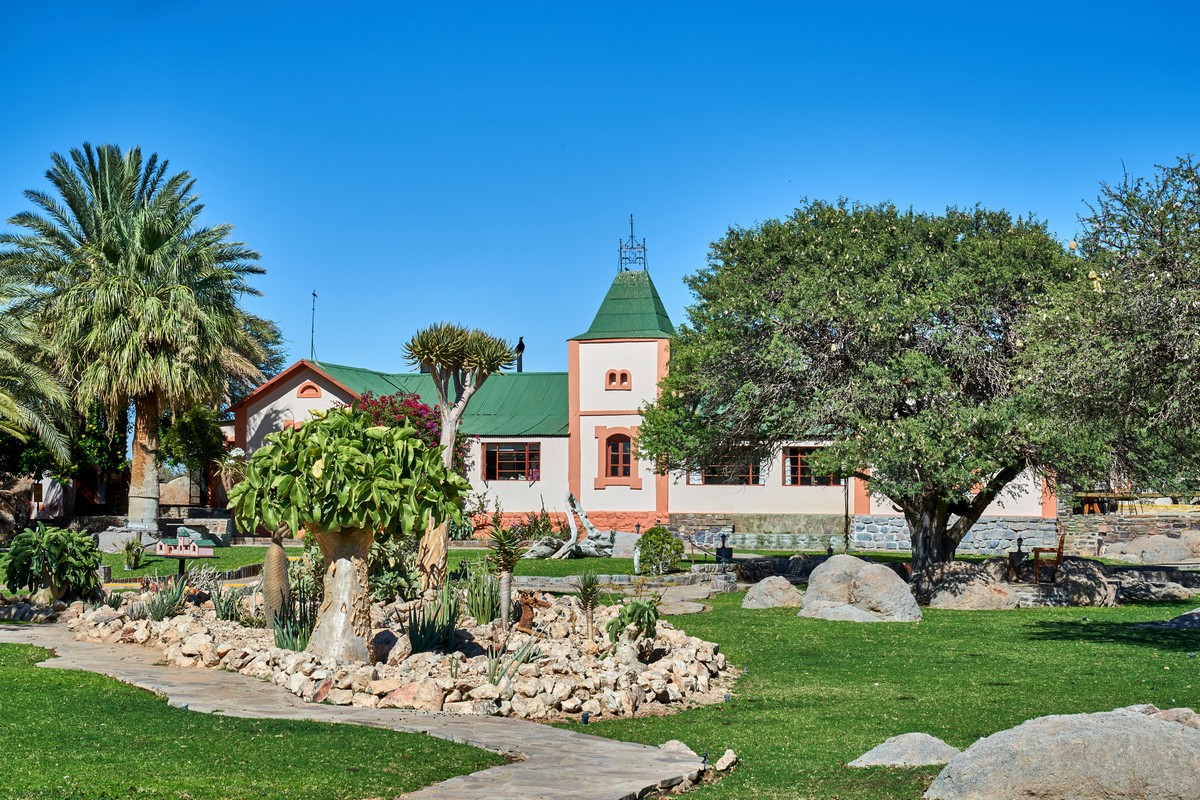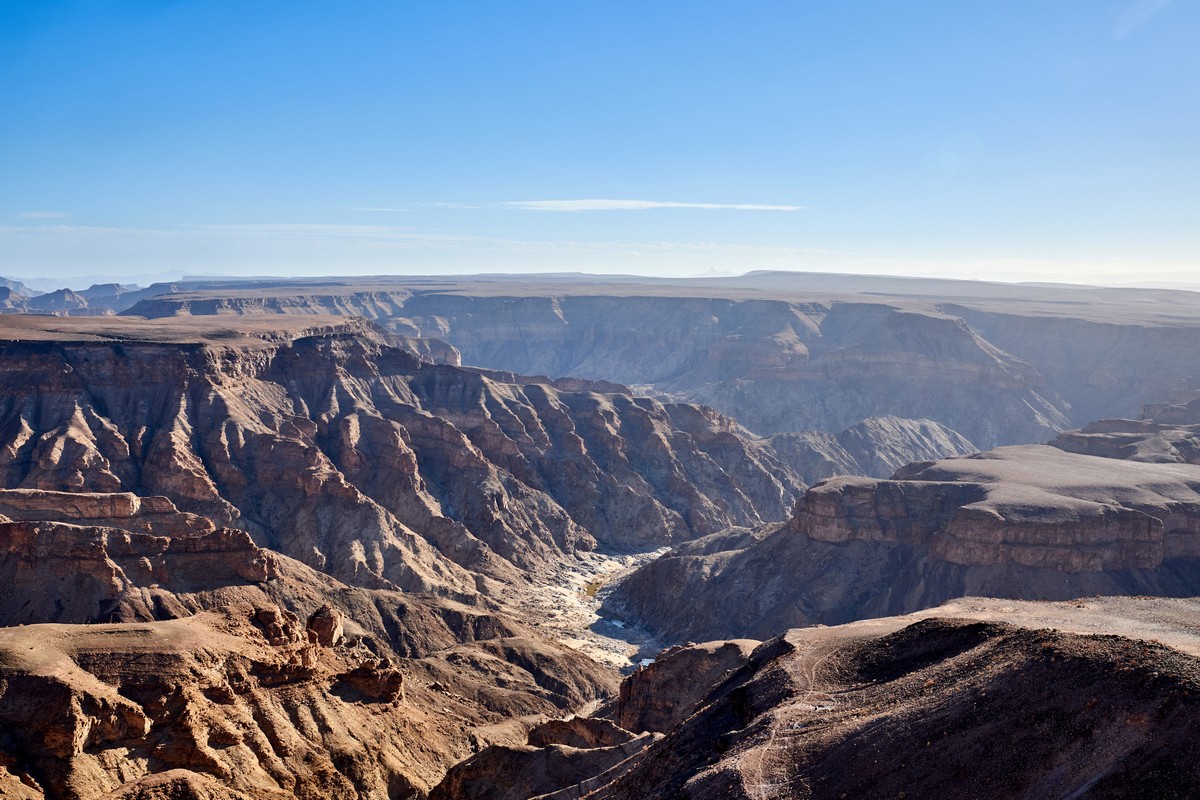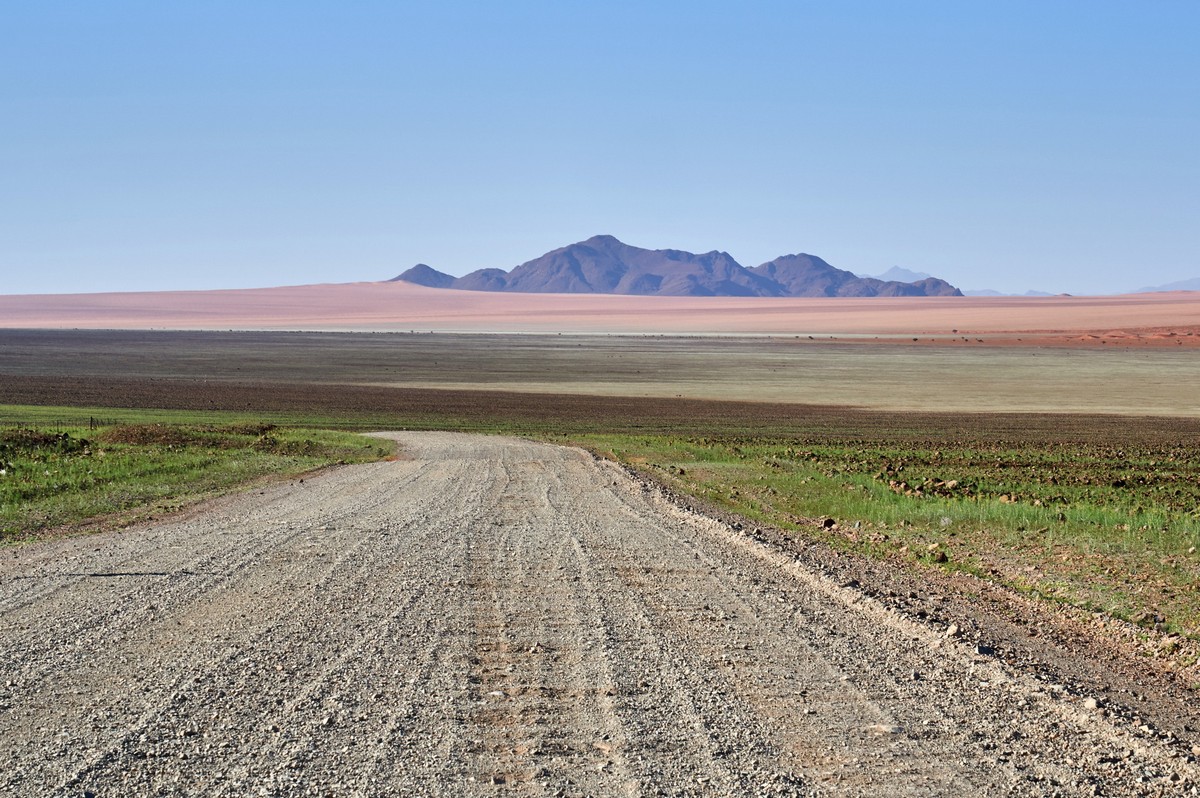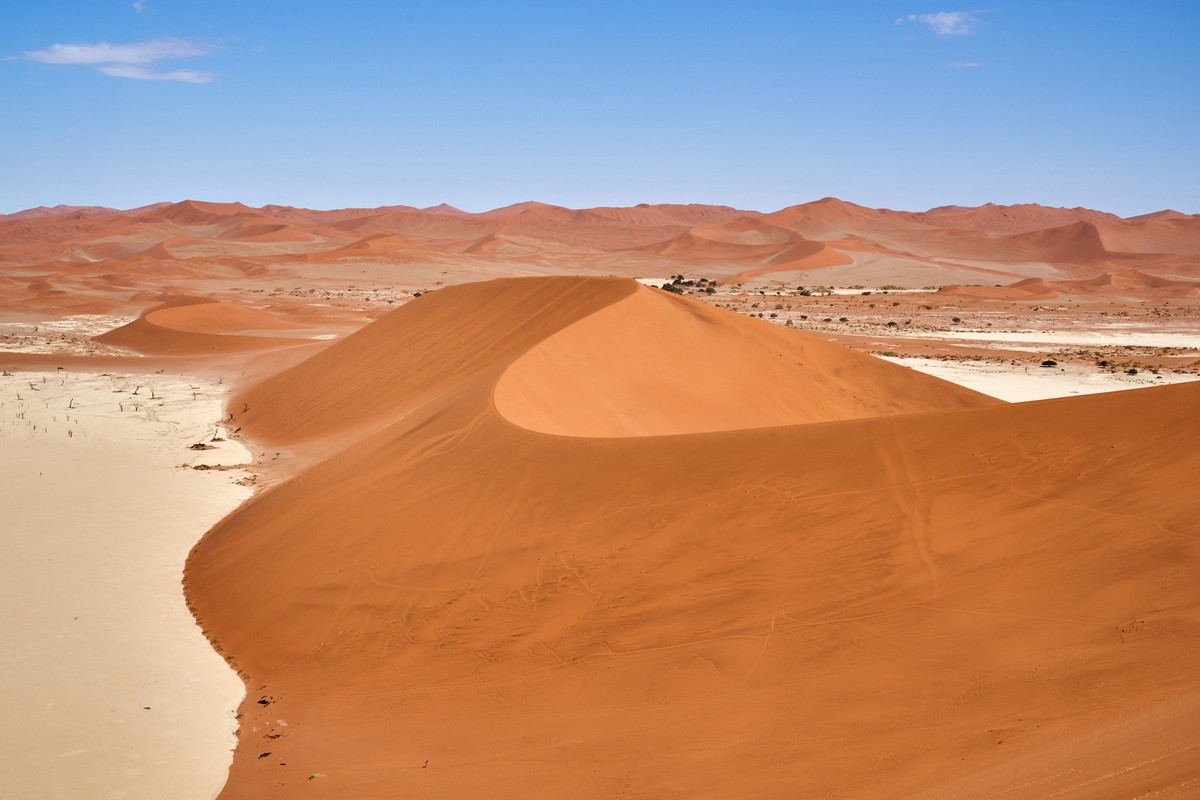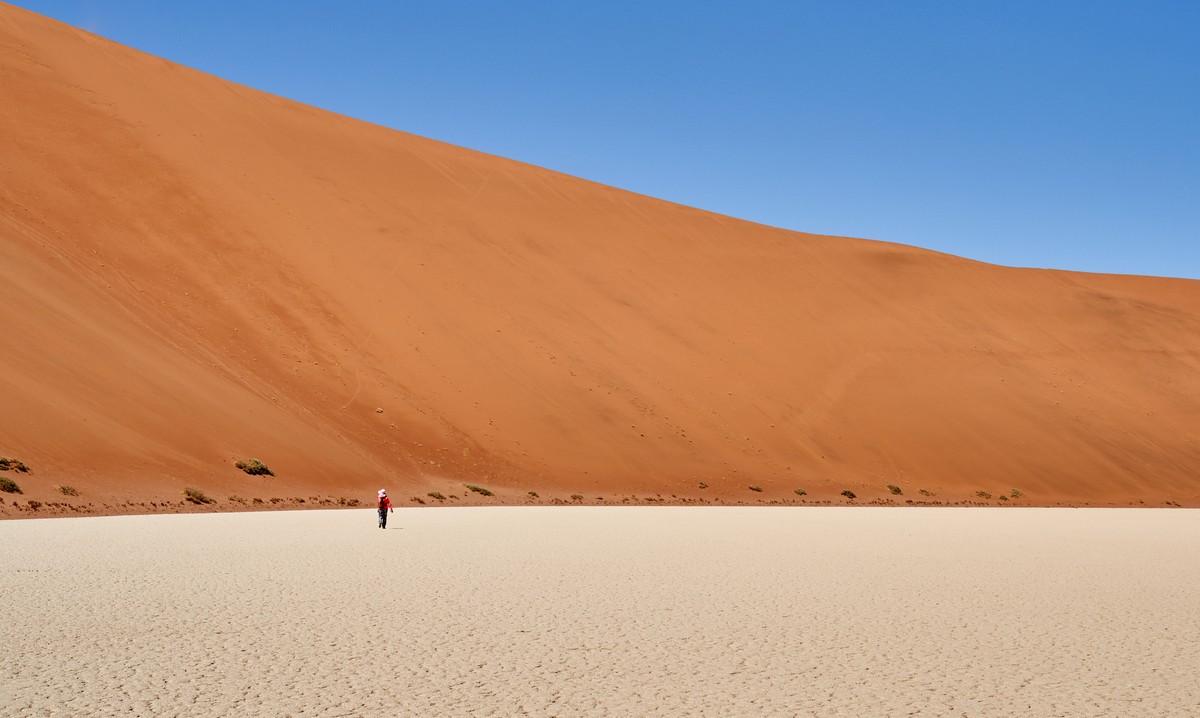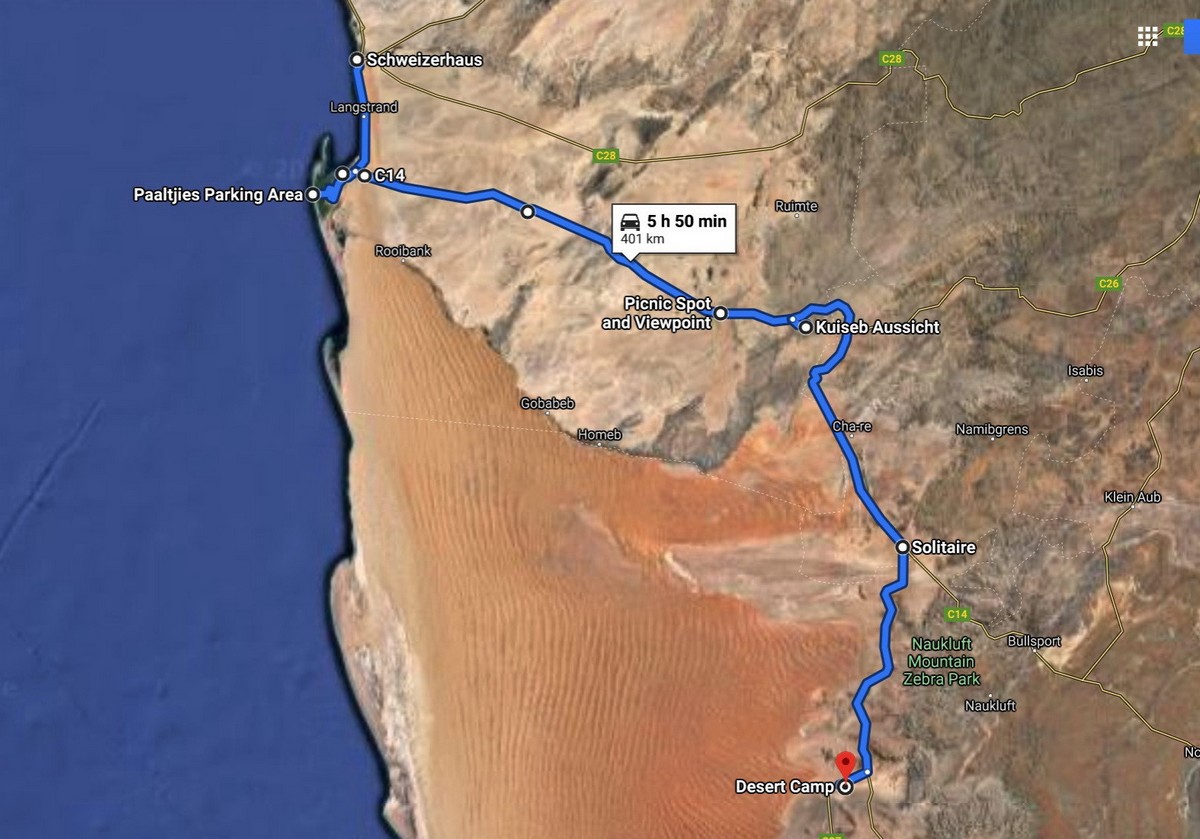Back to the day we checked out exotic birds and geological wizardry…
We left Vogelfederberg in the afternoon, but we still had a full 270km ahead of us before we were to get to our next hotel. I wouldn’t have minded, for the sun was out, the skies were bright blue and cloudless, and the desert scenery continued to astound; however, the roads was becoming markedly worse…
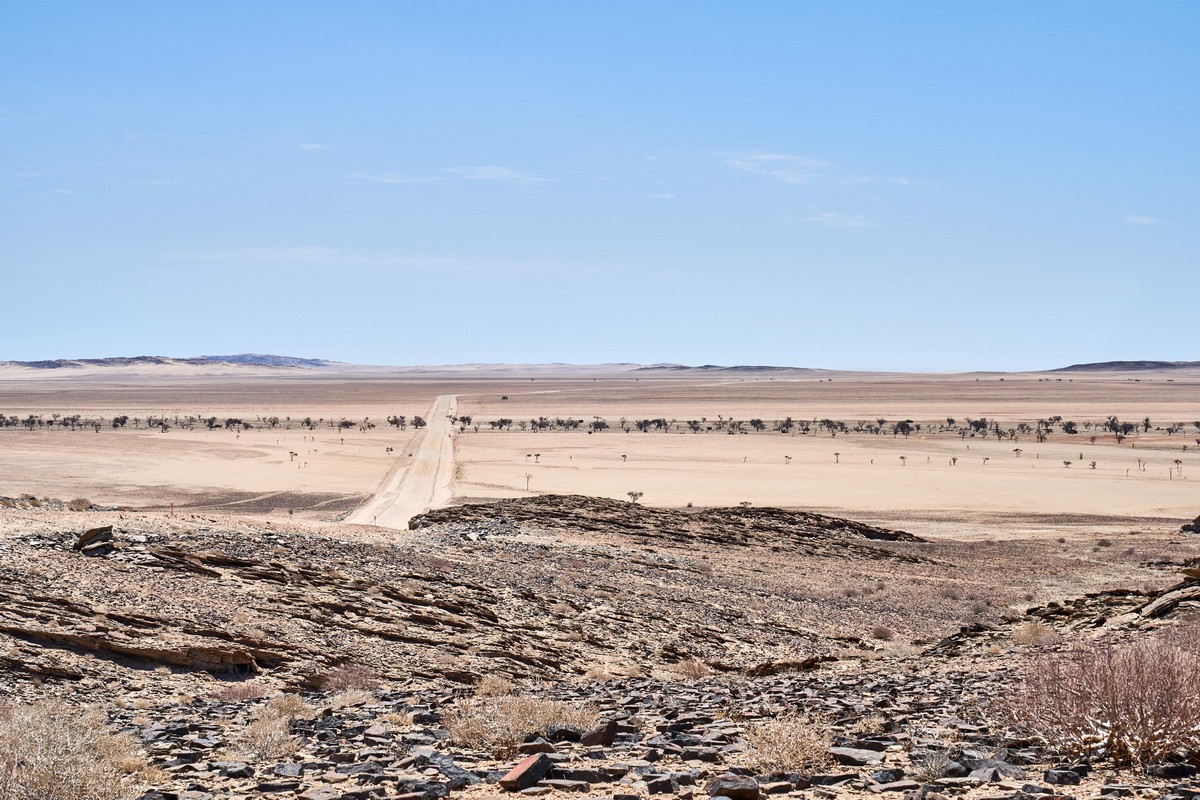
Not that the road was full of potholes or anything; it wasn’t that bad. The problem lay in the way the sand on the road became rather heavily compacted somehow and it had formed itself into little ridges that ran across the road, which just got taller and taller. They seemed to be 15cm tall by our next stop – a ‘beautiful view with trees’ ->

Actually, the above pic was taken somewhere else; however, out of all of the pics of the ridged roads – this one showed them for what they were best. Also, I didn’t have any pics of the crazy-high-ridges-on-the-road as I was too busy holding the steering wheel with both hands trying to control the pick-up!
Funnily enough, I found that the optimal speed for navigating the ridged road was around 80-90km/h! Any slower, and the car would shake so much you kept banging your head against the roof. Any faster was just scary. The sweet spot at 80-90 was where the suspension managed best. But the car wasn’t being ‘driven’ along the road; it was flying low over it! It would glide from side to side also a little too uncontrollably for comfort; it was like driving over the ice of a frozen-over Lake Baikal! Who’d have thought it?!
Read on…
